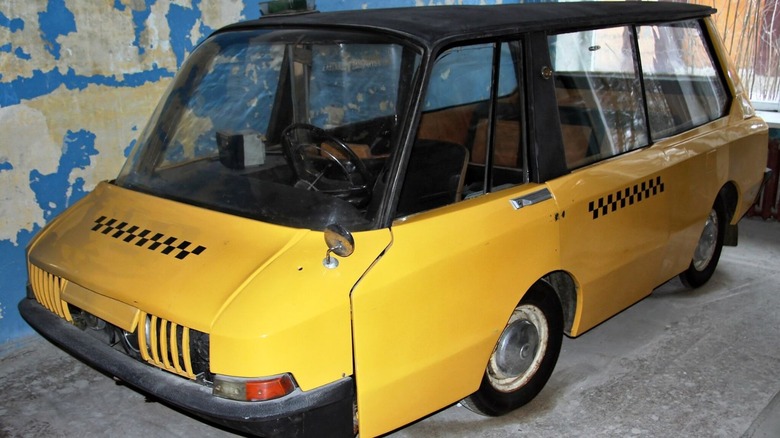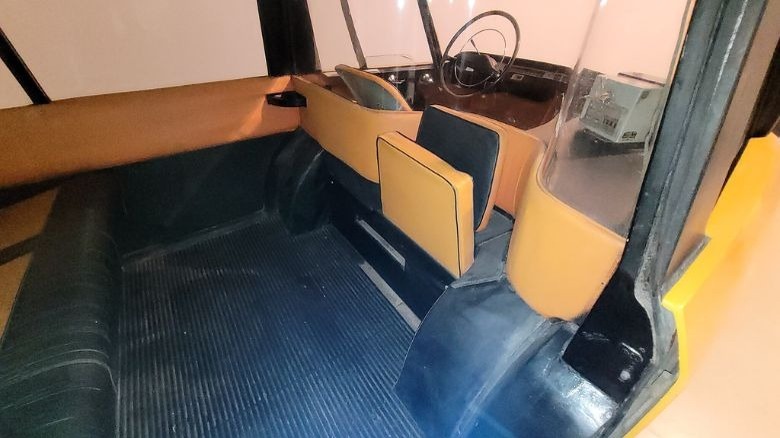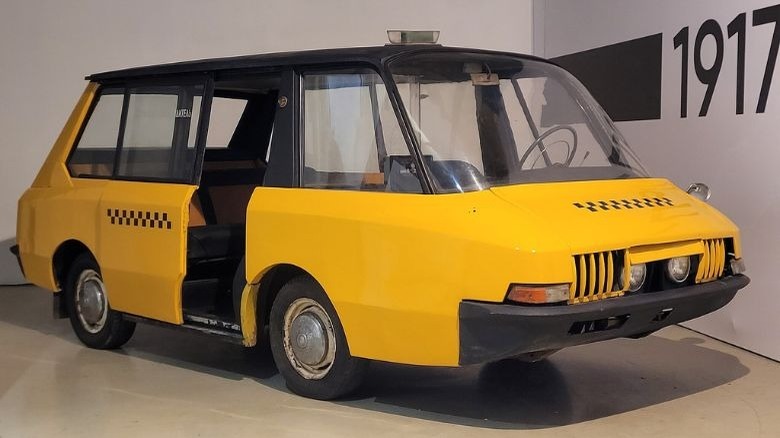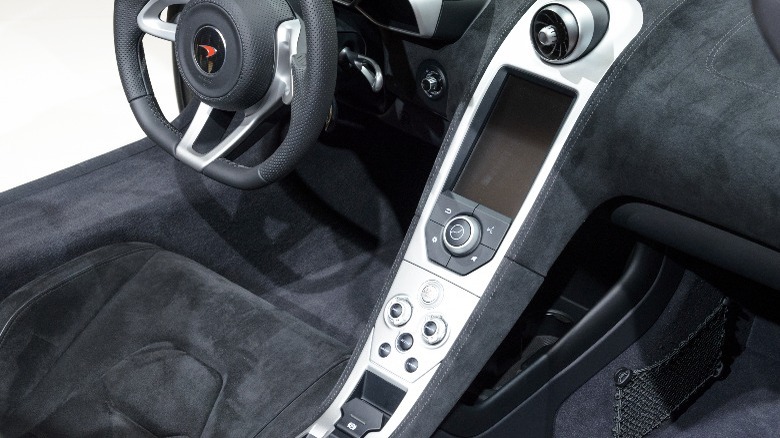The Soviet VNIITE-PT Is One Of The Strangest Taxis You Will Ever See
The 1960s were an exciting time for automobile enthusiasts, gracing us with wonders like the 1960 Austin Mini, the classic 1965 Ford Mustang, and the sleek 1963 Chevrolet Corvette Sting Ray. Across the Atlantic, though, a visionary was hard at work on an unusual design that could have revolutionized taxi services in Russia. Unfortunately, for all that it did right, the unique vehicle never went into production.
Dramatic, sharp lines and a bubbled windshield lent a futuristic aesthetic, almost as if the taxi were ripped out of the pages of a science fiction novel. This was no space-aged ride from the future, though, but instead the creation of a brilliant mind that was developing forward-thinking concepts, many that wouldn't be mass-produced in cars for another 20 or so years.
Dubbed the VNIITE-PT after Russia's All-Union Scientific Research Institute of Industrial Design, the 1964 design was the creation of the institute's director, artist, and designer, Yuri Aronovich Dolmatovsky. On the surface, the VNIITE-PT may appear impractical, but a glimpse under the hood reveals a marvel of a vehicle well ahead of its time.
[Featured image by Vitaly V. Kuzmin via Wikimedia Commons | Cropped and scaled | CC BY-SA 4.0]
A Spacious Alternative to Russian Taxis
Filling the streets of Russia in 1964 was a variant of the GAZ M21 Volga, the M21T taxi. Large and more traditional in design, the M21T got the job done, but Dolmatovsky's futuristic alternate would have proved to be a more efficient method of passenger transport. At first glance, it's a strange, almost cartoonish-looking vehicle. As you start to break down the overall design, though, you begin to see the genius at work.
According to the Autonews YouTube channel, which performed a deep dive into a prototype of Dolmatovsky's VNIITE-PT housed at the Military-Technical Museum in Chernogolovka, there were similarities in interior space between Dolmatovsky's design and the M21T, but the artist crafted a vision that really put passenger comfort at the forefront.
Unlike traditional cars with a lip at the doors, the VNIITE-PT featured a low floor and sliding door. Strollers and rolling luggage could be conveniently rolled in, streamlining the boarding process. To keep passengers close to their belongings, the taxi had more than enough floor space for luggage without impeding passenger legroom, including space behind the sofa seating.
The VNIITE-PT was equipped to transport up to four passengers, with three on the wide sofa and a fourth on a hidden, fold-out seat facing the rear of the taxi.
[Featured image by Svetlov Artem via Wikimedia Commons | Cropped and scaled | CC BY-SA 4.0]
More Modern Conventions at Play
The real marvel of the VNIITE-PT was Dolmatovsky's ability to inadvertently peer into the future. In the 1970s, a British designer named Fergus Pollock started working on a design for Chrysler UK that eventually became the 1984 Renault Espace. Though there's no known link between Pollock's concept and Dolmatovsky's prototype, a side-by-side comparison shows some similarities in design. However, the biggest and most notable is the construction.
The VNIITE-PT prototype favored a steel frame covered in plastic panels. This was mirrored, whether intentionally or not, by the 1984 Espace, which featured a chassis of galvanized steel covered in a polyester composite. These models veered away from the common steel-bodied automobiles first introduced in the early 1900s and offered a lighter but durable construction.
The taxi features a unique design implementation that wouldn't be out of place today- a thick plastic partition separates the driver from the passengers, which wouldn't be widely adopted and required for taxis in large cities like New York until the early 1970s. To protect passengers and prevent tampering, the taximeter was positioned for visibility rather than angled toward the driver.
[Featured image by Svetlov Artem via Wikimedia Commons | Cropped and scaled | CC BY-SA 4.0]
Under the VNIITE-PT's Hood
One of Dolmatovsky's greatest feats for the VNIITE-PT was creating a passenger-friendly design without sacrificing the space needed for an engine powerful enough to navigate 1960s Russia. Dolmatovsky opted for the engine of the Moskvitch 408 and designed a compartment just wide and deep enough to house the hardware.
The 50-horsepower motor fits in a very small space alongside the gearbox, battery, drive shaft, and even the spare tire mourning bracket. To make this possible, Dolmatovsky angled the gearbox to maximize space.
Similar concepts were implemented in the driver's seat, as well, to continue maximizing passenger space. Despite being designed for function over comfort, the VNIITE-PT caters to the driver with a streamlined dashboard and angled center panel reminiscent of something like the McLaren 650S Spider.
For all that the VNIITE-PT did right, only one was ever assembled. Though it may look strange, the prototype wound up being an amalgam of ideas a little too ahead of their time.



